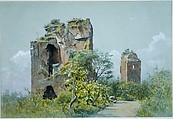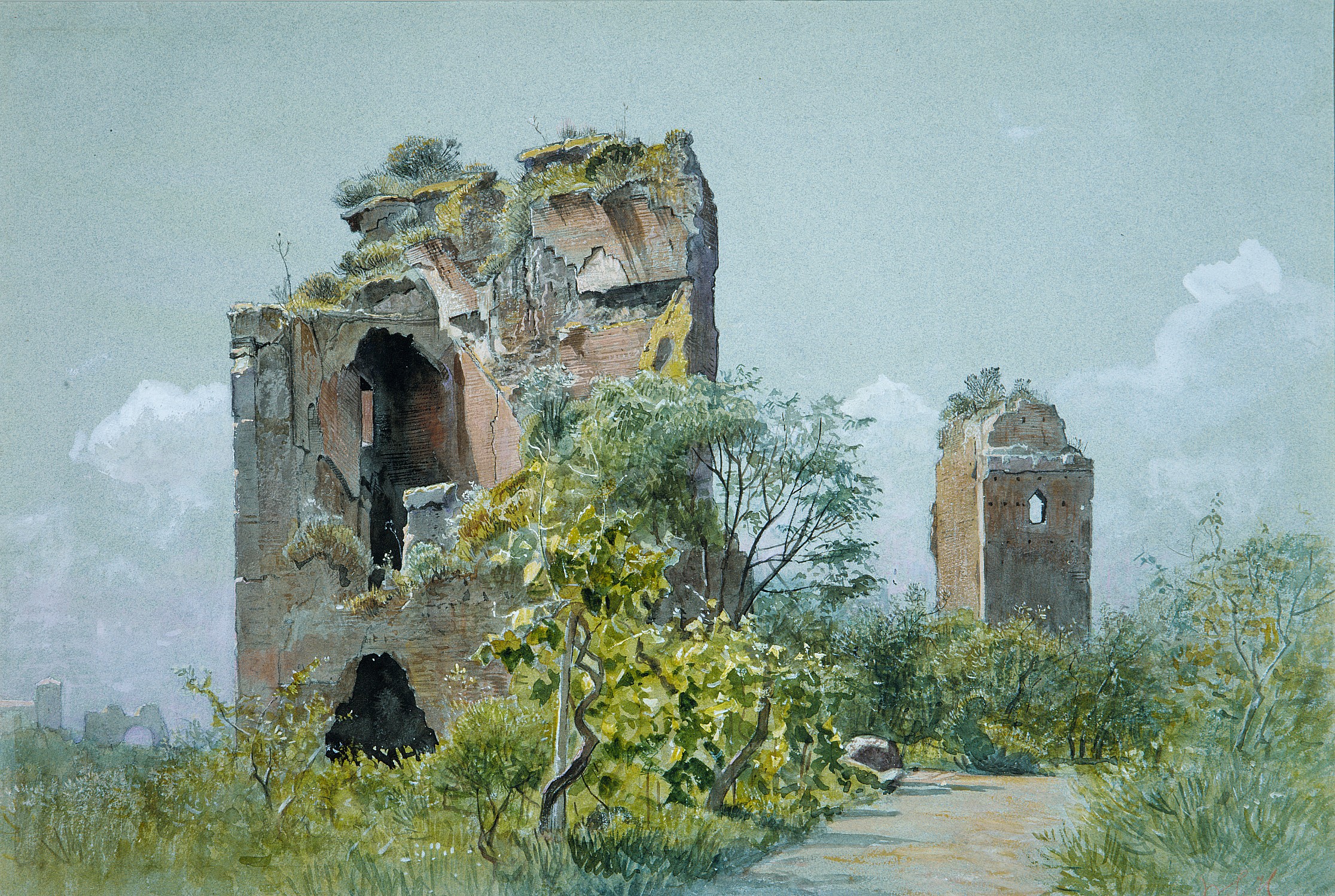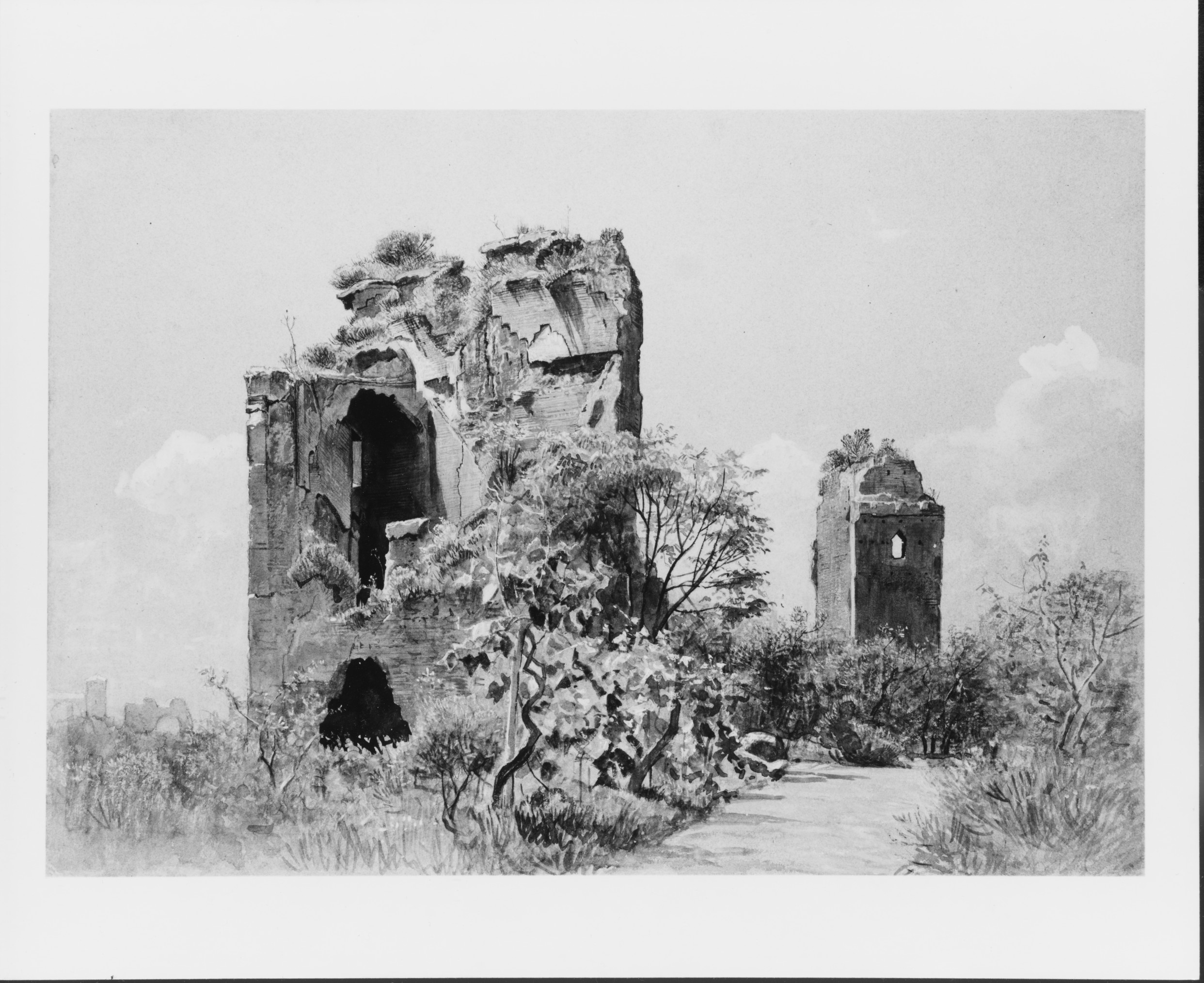Baths of Trajan (Sette Sale, Villa Brancaccio, Rome)
William Stanley Haseltine American
Not on view
The artist’s daughter, Helen Haseltine Plowden, named this watercolor Sette Sale, Villa Brancaccio when she donated it to the Museum in 1967. In a biography of her father, she described the villa as a "favourite resort" of the family and recalled joyful memories of her father sketching nearby ruins while the children played in the garden and the elders talked. The location depicted, however, is neither Sette Sale, a group of cisterns that supplied water to the Baths of Trajan (104–9 a.d.), or the Villa Brancaccio. It seems to instead represent the nearby ruins of the Baths of Trajan. Haseltine was likely attracted to the sense of decay of the ancient building as well as the verdant botanical overgrowth, which he rendered in vivid hues on blue paper, left bare to suggest the Roman sky.
Due to rights restrictions, this image cannot be enlarged, viewed at full screen, or downloaded.
This artwork is meant to be viewed from right to left. Scroll left to view more.





